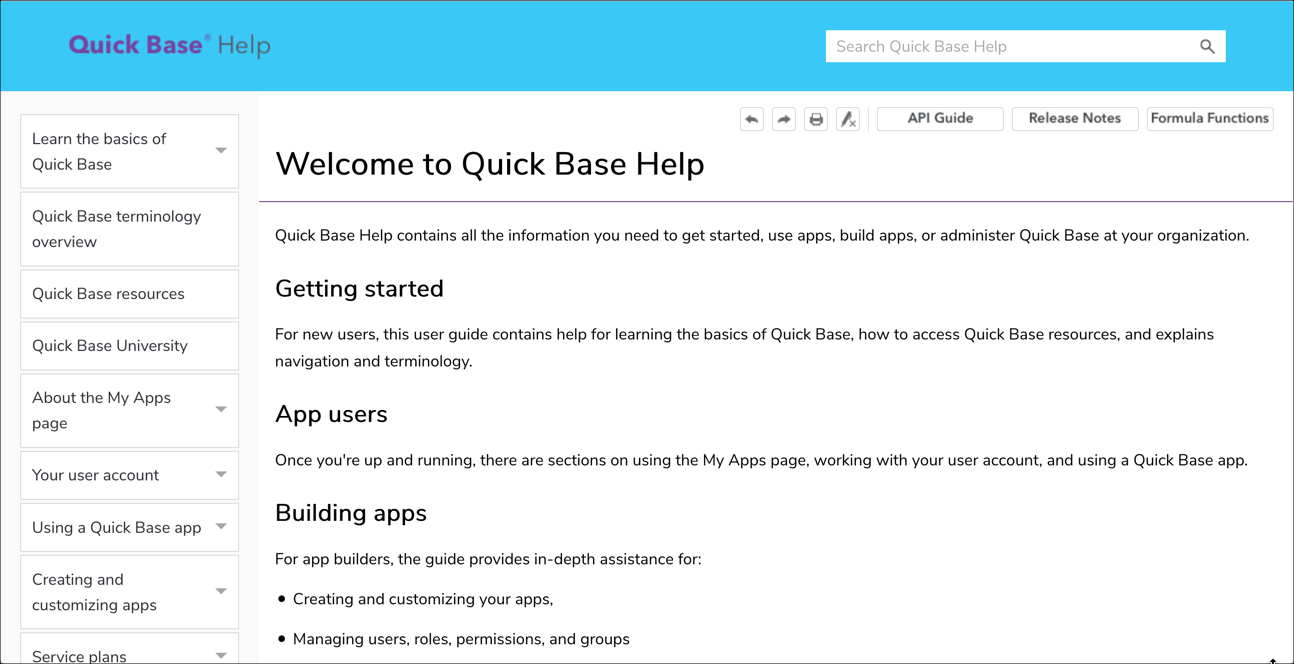User guide and API guide content
These are all links to examples, plus writing samples, from work I’ve done on user guides, API guides, and documentation for products.
Quick Base Help
At Quick Base, I worked on writing new and revised content for the user guide (called Quick Base Help) and the API Guide.
Customers could access these guides externally from the product, plus some of the user guide topics were consumed by an in-product help menu.
These guides were written and produced using Madcap Flare.
Visit the two guides here:

Writing samples
Here are links to specific writing samples from the user guide:
- Creating a relationship in Quick Base - A rewrite of several existing help topics into a single entry, in order to streamline language, match brand voice and tone, and conform to a new context-sensitive help interaction.
- Field types - A rewrite of all the field type definitions for Quick Base databases.
- Quick Base sandbox - This is a collection of topics covering a feature where application changes can be developed and tested without affecting the operations of the live app itself.
- Visual Builder - An overview topic for Visual Builder, the data-diagramming development environment for Quick Base.
Beta program guides
These are samples from end-user and developer guides for Mercury, which was a planned new product for the Quick Base portfolio. I wrote these guides to support the beta program. The layout, style, and tone of the guides was intended to match the new branding for this proposed offering.
- Mercury builder - Application developer guide for Mercury, explaining major app-dev tasks.
- Mercury user - User guide for Mercury, explaining basic navigation.
Cadence documentation
At Cadence, I worked on both customer-facing and internal documentation:
- Xcelium Save/Restart guide - Documents a feature that allowed developers designing semiconductor simulation tests to easily save and restart the process, which saved time and provided flexibility.
- Installing, Running, and Adding Tarkits to Cadence Help - Internal documentation that explained how to install a help application, then load the latest documentation files.
- Known Problems and Solutions Process - Internal documentation for writers on how to produce “known problems and solutions,” which were documents that showed open issues, any available solutions, and the planned release where the issue was to be fixed.
Lotus Domino transaction logging
I worked with the database architect to create this administration documentation for Lotus Domino. It explains transaction logging, which is a common reliability feature for database products. It allowed Domino to recover from faults more quickly and with less data loss. The documentation was written for release 5.0 of Lotus Domino (1999), yet remains basically untouched with release 10 (2019).